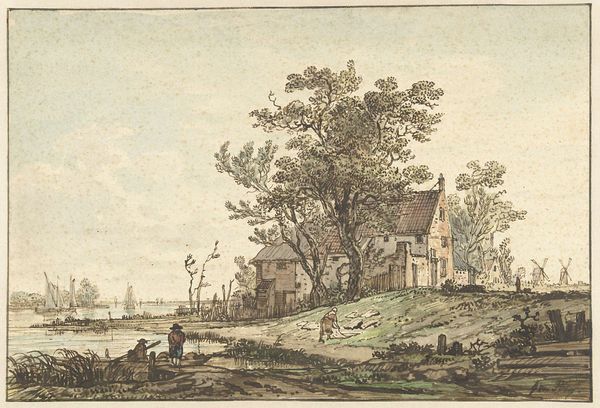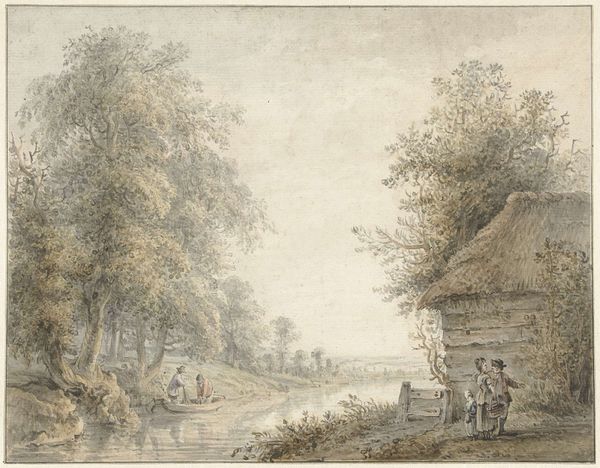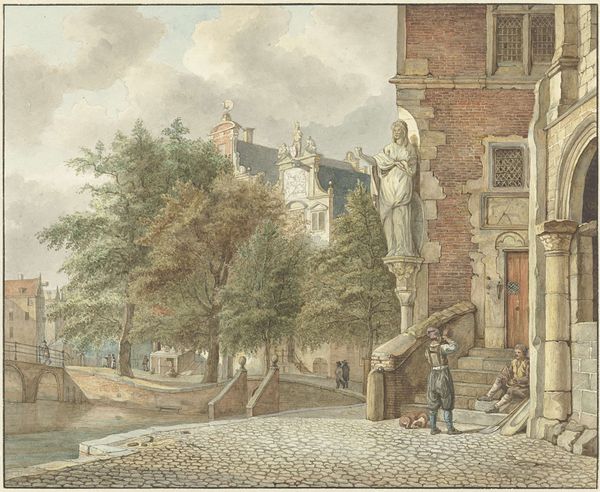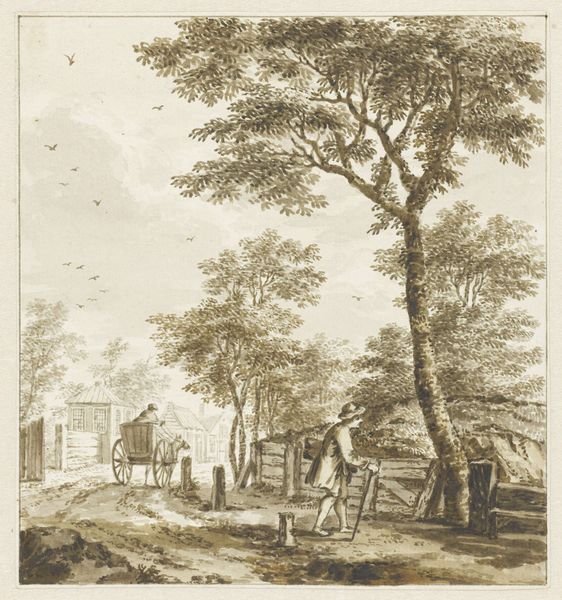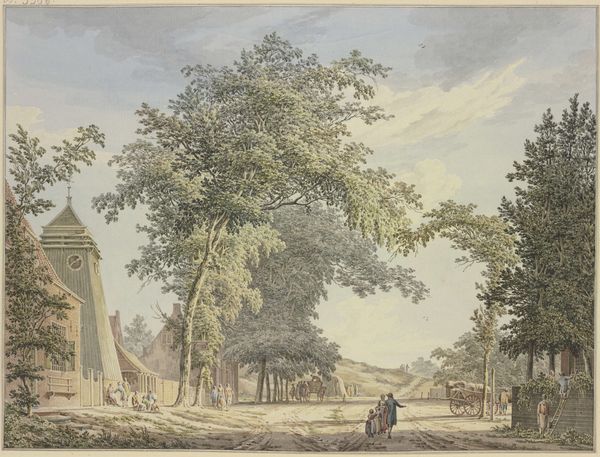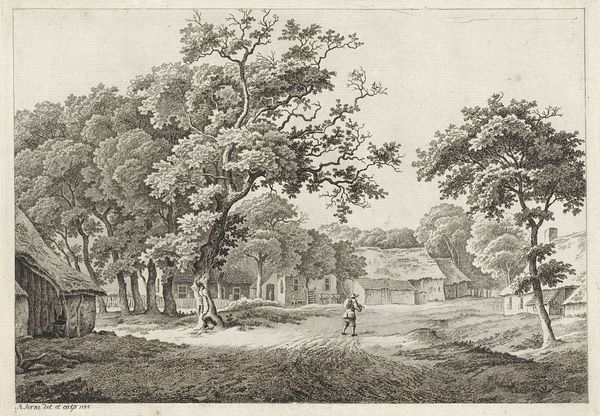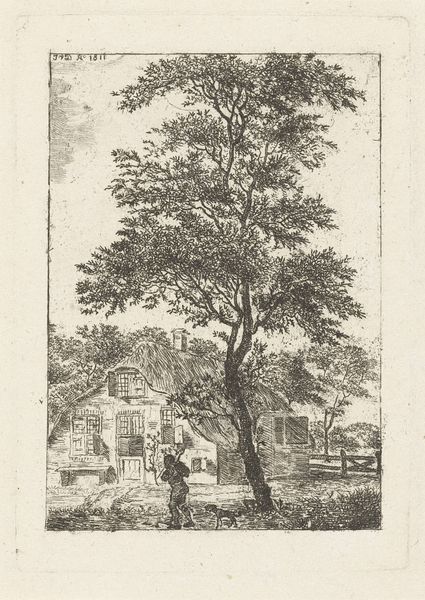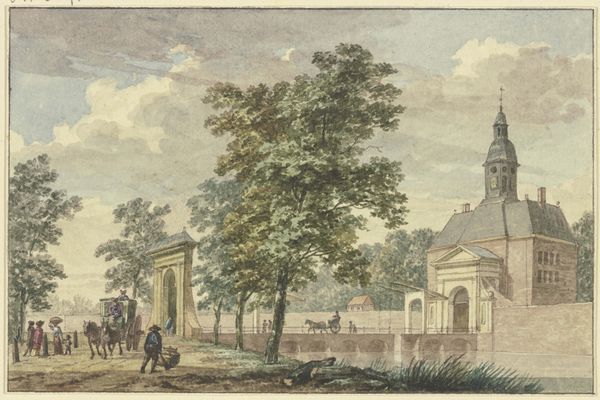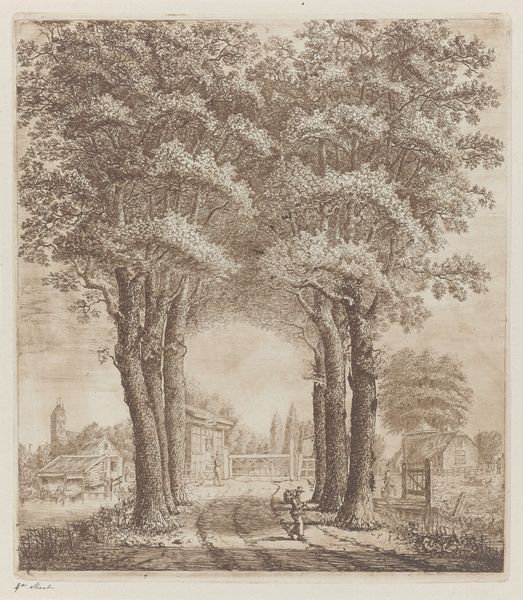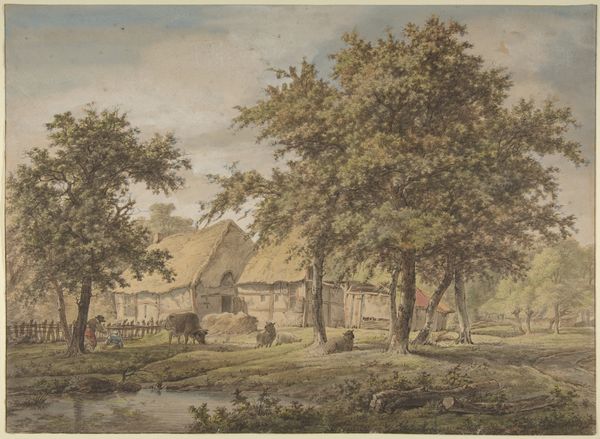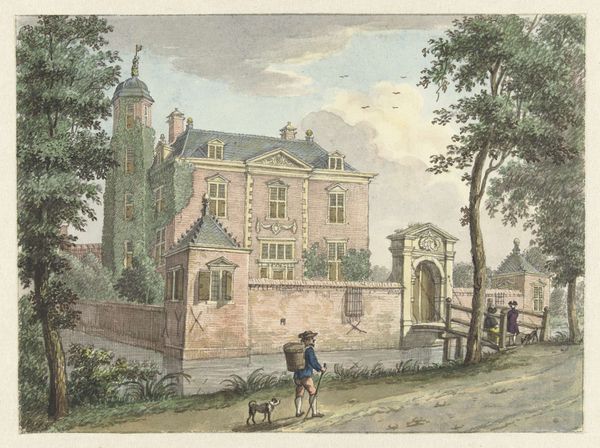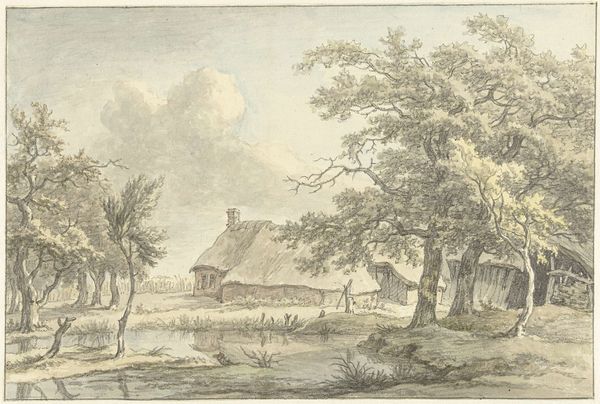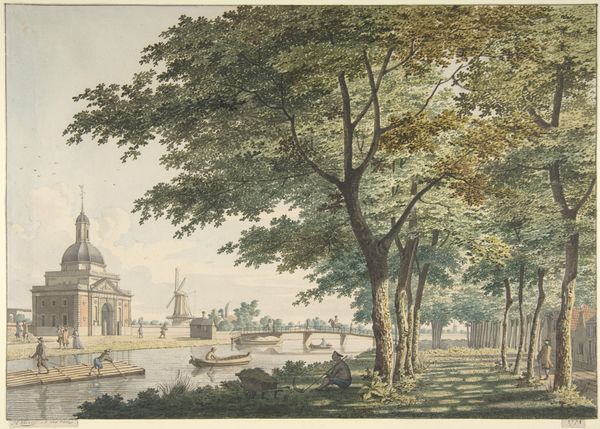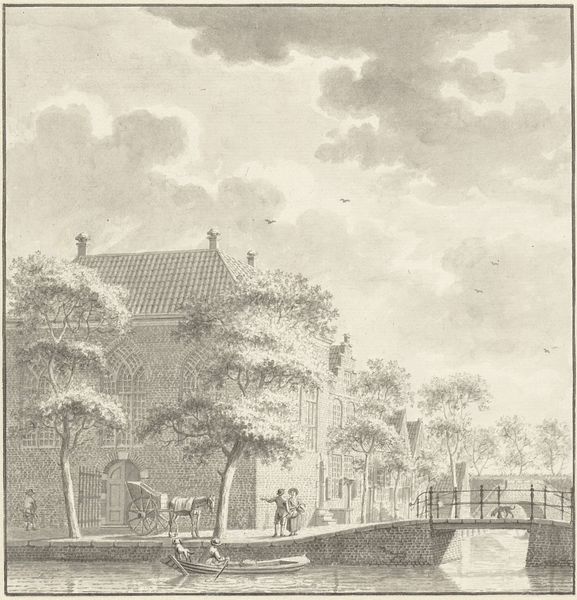
View of Luxemburg House at Maarssen on the Vecht 1757 - 1822
0:00
0:00
Dimensions: height 443 mm, width 431 mm
Copyright: Rijks Museum: Open Domain
Hermanus Petrus Schouten created this watercolor of Luxemburg House at Maarssen on the Vecht. It provides a window into the leisure activities of the Dutch elite and the visual codes of class distinction. The carefully rendered architecture and manicured landscape serve to communicate wealth and status, while the figures strolling in the foreground suggest a life of cultivated leisure. The location itself, along the Vecht river, was known for its country estates, making it a popular retreat for the wealthy merchants of Amsterdam. This image creates meaning through its depiction of a harmonious relationship between the built environment and the natural world. It speaks to the values of the Dutch upper class in the late 18th century, emphasizing order, refinement, and the enjoyment of private property. Understanding this work requires delving into the economic and social history of the Dutch Republic, as well as the visual language of class and status in the period. Research into estate records, travelogues, and period literature would offer valuable insights. The art historian acts as an interpreter, using historical context to illuminate the meanings embedded in this image of Dutch life.
Comments
rijksmuseum about 2 years ago
⋮
Many of Amsterdam’s wealthy merchants had country estates along the River Vecht, similar to Luxemburg House. In this drawing, artist Hermanus Petrus Schouten depicted the house more meticulously than he usually did in his topographical views. Behind the dark foreground and a corner of some other, smaller country estate lies Luxemburg, bathed in gentle sunlight, on the opposite bank of the Vecht.
Join the conversation
Join millions of artists and users on Artera today and experience the ultimate creative platform.
